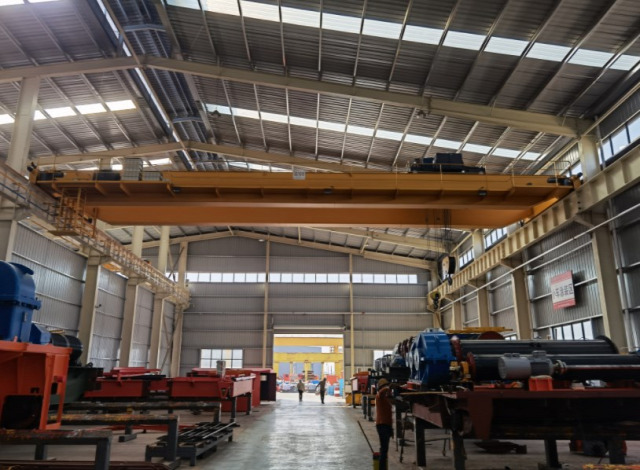Double girder overhead travelling cranes are widely used in various industries for efficient material handling. To ensure the safe and smooth operation of these cranes, proper understanding of their operation and control is essential. In this article, we will explore the key aspects of operating and controlling double girder overhead travelling cranes. From the operational procedures to the control mechanisms and safety considerations, this information will help operators and personnel involved in material handling to optimize their crane operations and ensure a safe working environment.

Operational Procedures
a) Pre-Operation Checks: Before operating a double girder overhead travelling crane, operators should perform pre-operation checks to ensure that all components, including the hoist, trolley, and bridge, are in proper working condition. This includes inspecting the hooks, ropes, brakes, and safety devices for any signs of damage or wear.
b) Start-up and Shutdown: When starting up the crane, operators should follow the manufacturer's instructions to ensure a safe and smooth operation. Similarly, during the shutdown process, operators should adhere to the proper procedure to prevent any equipment damage or accidents.
c) Load Handling Techniques: Proper load handling techniques are crucial for safe and efficient operations. Operators should be trained in rigging and slinging techniques to secure the load properly and prevent load swinging or shifting during lifting and transporting.
Control Mechanisms
a) Pendant Control: Double girder overhead travelling cranes are typically operated using pendant controls. These handheld controllers allow operators to control the crane's movements, including lifting, lowering, trolley travel, and bridge travel. Operators should be trained to operate the pendant control smoothly and accurately, maintaining control over the load at all times.
b) Radio Remote Control: Some modern double girder overhead travelling cranes are equipped with radio remote control systems. These wireless devices enable operators to control the crane from a safe distance, providing better visibility of the load and the surrounding environment. Operators must be trained in using the radio remote control effectively and understanding the range limitations.
c) Automated Control Systems: Advanced double girder overhead travelling cranes may feature automated control systems that optimize operations and enhance efficiency. These systems may include automated load positioning, anti-sway mechanisms, and collision avoidance technologies. Operators should be familiar with the functionality of these automated systems and understand how to monitor and override them when necessary.
Safety Considerations
a) Safety Devices: Double girder overhead travelling cranes are equipped with various safety devices, such as overload protection, emergency stop buttons, and limit switches. Operators must be aware of the locations and functions of these safety devices and know how to use them effectively in case of emergencies or equipment malfunctions.
b) Training and Certification: Proper training and certification are essential for crane operators to ensure safe and competent operations. Operators should undergo comprehensive training programs that cover crane operation, load handling techniques, safety procedures, and emergency response protocols. Ongoing training and refresher courses should also be provided to keep operators updated with the latest industry standards and best practices.
c) Maintenance and Inspections: Regular maintenance and inspections are vital to keep double girder overhead travelling cranes in optimal working condition. Operators should report any signs of wear, damage, or abnormalities to the maintenance personnel promptly. Adhering to the recommended maintenance schedules and conducting regular inspections can help identify and address potential issues before they escalate.
Proper operation and control of double girder electric overhead travelling cranes are crucial for ensuring safe and efficient material handling operations. Operators should be well-versed in operational procedures, including pre-operation checks, start-up, shutdown, and load handling techniques. They should be trained in using the control mechanisms, such as pendant controls, radio remote controls, and automated systems, with precision and accuracy. Additionally, operators must prioritize safety by understanding and utilizing the safety devices, undergoing comprehensive training, and actively participating in maintenance and inspection programs. By following these practices, companies can achieve optimal crane performance, minimize accidents, and create a secure working environment.

